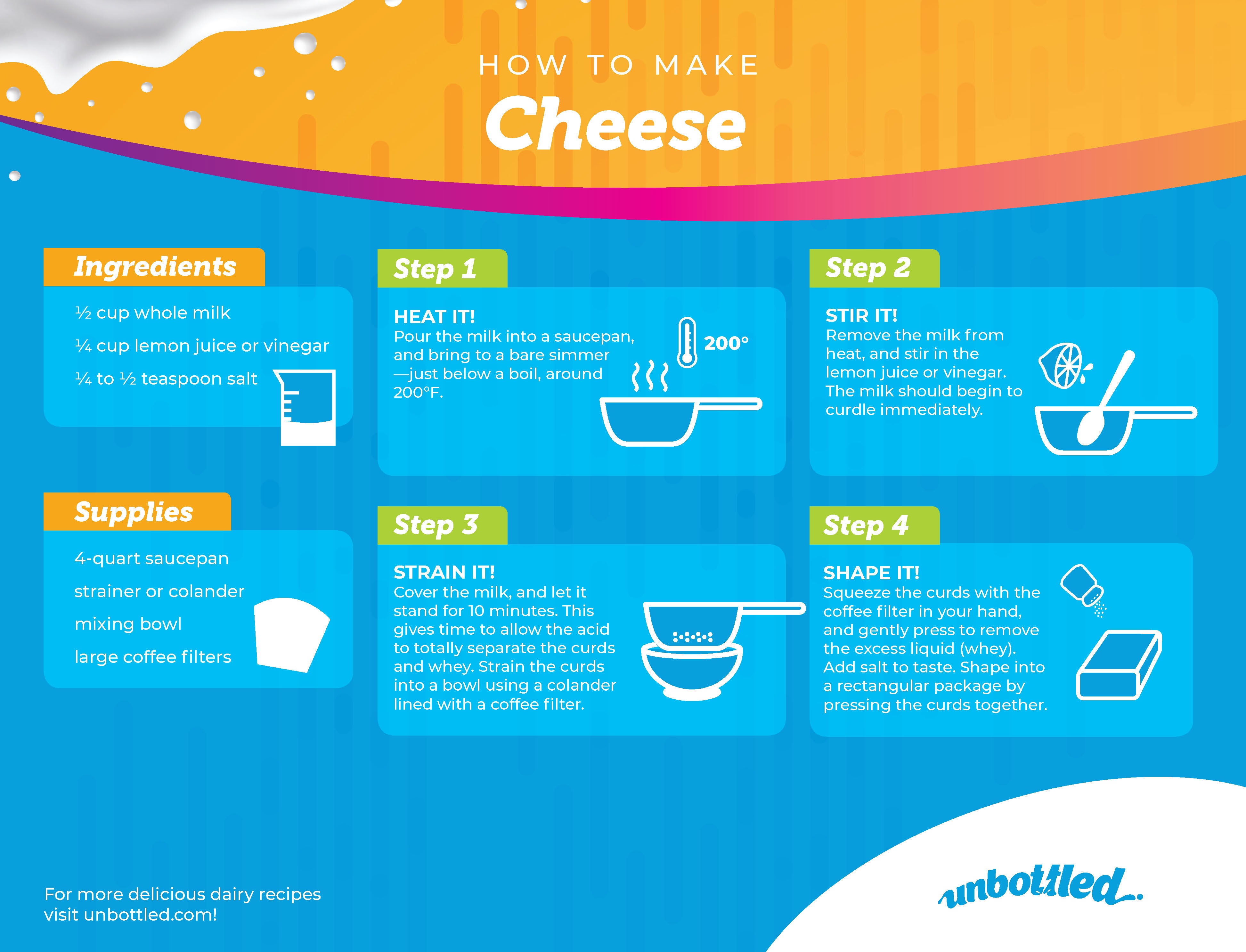
Smaller curd pieces will retain less moisture over the aging process and are ideal for aged cheeses.ĥ. The curd is cut down into smaller pieces. At this point, the cheese has reached the curd stage.Ĥ. The most common coagulant is rennet, an enzyme that helps bind the milk proteins, turning the milk into a gel-like consistency over time. The cultures will consume the lactose or natural sugars in the milk, transforming it into lactic acid - an essential process that helps set the milk into curd, gives cheese its flavour, and ensures the cheese will be safe to eat as it ages.ģ. Next, the milk is acidified either directly by adding citric acid or vinegar for a ricotta or mascarpone or by adding cultures or “good” bacteria. Great cheese begins with high-quality, fresh local milk that is typically slowly warmed.Ģ. With the average Canadian consuming over 12 kg of cheese a year, it’s clear we love our cheese, but how many of us really understand the art of the cheesemaking process and how fresh cheese transforms into aged and specialty cheeses?ġ. Everything else that goes into making a stand-out cheese is the closely kept secret of the cheesemaker’s craft. Making natural cheese only requires four ingredients: fresh milk, salt, “good” bacteria, and rennet. goat milk) or different aging times impact texture, taste, and more.Cheese is a simple food made from natural ingredients starting with fresh local milk. Whether you like hard cheese, soft cheese, cheese with a strong flavor, or a sweet taste like cottage cheese, there is science behind the way it is made! If you have a recipe, and some rennet (also found in most grocery stores), you can make cheese in your own kitchen and experiment with how different kinds of milk (e.g. Some cheeses age for several years! You can make cheeses like cheddar or parmesan at home, and age them for a few weeks (or up to 6 months). Other cheeses must age before they are good to eat. These cheeses can be made quickly, and eaten immediately. Some cheeses, like ricotta or cottage cheese, are just curds, with some whey left, that has not been drained. Curds form white chunks, that are strained through cheesecloth to remove extra moisture, then pressed together to form a block of cheese.

Whey looks like watery milk, with a faint yellow color. More than 90% of the fat and casein go into the curds, along with small amounts of water, albumins, and lactose. When you add rennet and heat, milk separates into two parts – curds (which eventually become cheese) and whey. Lactose is a kind of sugar (or glucose) contained only in milk. Albumins are a group of amino acids in milk which also provide nutrients. Casein is the protein in milk, which gives it nutritional value.

Milk contains water, fat, casein, albumins, and lactose. Curdled milk usually contains less than 5% rennet, so only a small amount is necessary to make cheese. This process is called coagulation (or curdling). Rennet is necessary for making cheese, because it separates the milk into curds and whey. Most rennet used for cheese making comes from vegetables, though it can also come from sheep or other animals.

It is found in most mammals’ stomach linings, to help the digestive system. Rennet is an enzyme, and helps break down milk proteins. You might be able to make your favorite cheese at home, using milk and rennet (or use a Cheesemaking Kit).

Cheeses come in lots of different tastes and textures. Cheese is usually made from cow or goat’s milk.


 0 kommentar(er)
0 kommentar(er)
